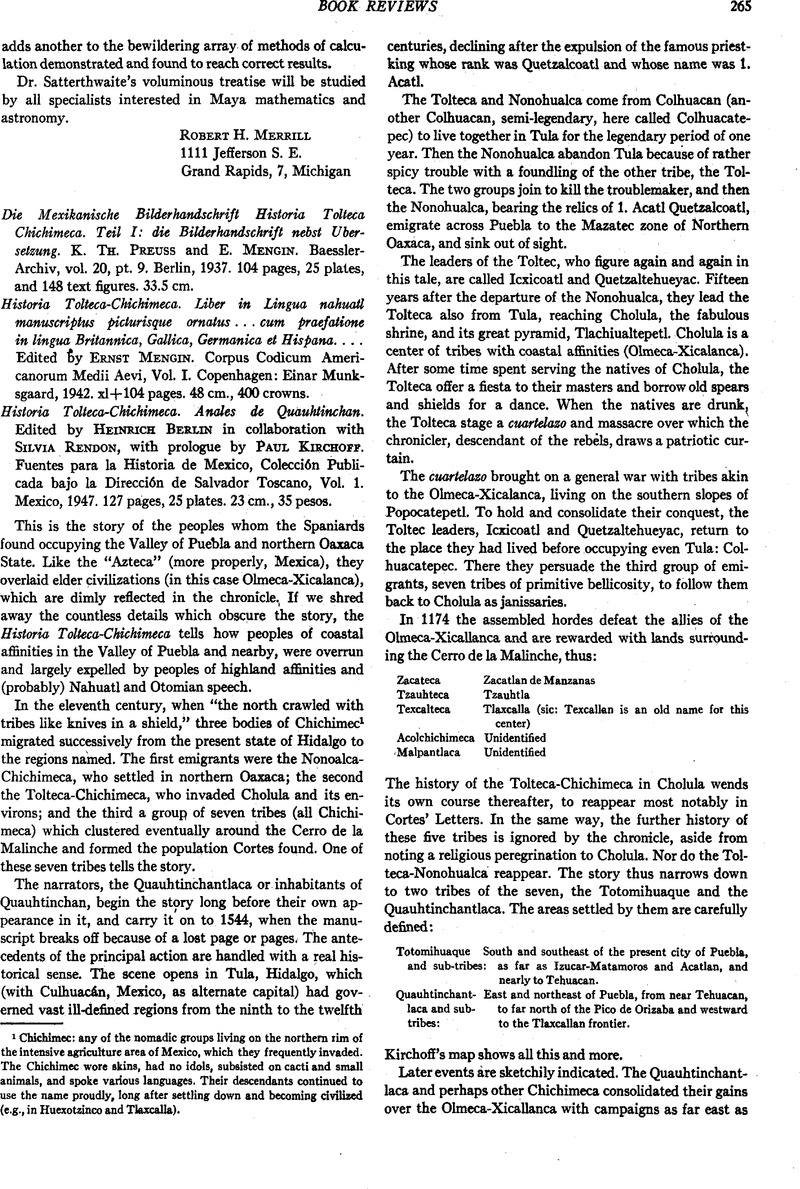No CrossRef data available.
Article contents
Die Mexikanische Bilderhandschrift Historic. Tolleca Chichimeca. Teil I: die Bilderhandschrift nebst Ubersetzung. K. Th. Preuss and E. Mengin. Baessler-Archiv, vol. 20, pt. 9. Berlin, 1937. 104 pages, 25 plates, and 148 text figures. 33.5 cm. - Historia Tolteca-Chichimeca. Liber in Lingua nahuatl manuscriptus picturisque omatus... cum praefatione in lingua Britannica, Gallica, Germanica et Hispana.... Edited by Ernst Mengin. Corpus Codicum Americanorum Medii Aevi, Vol. I. Copenhagen: Einar Munksgaard, 1942. xl+104 pages. 48 cm., 400 crowns. - Historia Tolteca-Chichimeca. Andes de Quauhtinchan. Edited by Heinrich Berlin in collaboration with Silvia Rendon, with prologue by Paul Kirchoff. Fuentes para la Historia de Mexico, Colecciόn Publicada bajo la Dirección de Salvador Toscano, Vol. 1. Mexico, 1947. 127 pages, 25 plates. 23 cm., 35 pesos
Published online by Cambridge University Press: 25 January 2017
Abstract

- Type
- Book Reviews
- Information
- Copyright
- Copyright © The Society for American Archaeology 1948
References
1 Chichimec: any of the nomadic groups living on the northern rim of the intensive agriculture area of Mexico, which they frequently invaded. The Chichimec wore skins, had no idols, subsisted on cacti and small animals, and spoke various languages. Their descendants continued to use the name proudly, long after settling down and becoming civilized (e.g., in Huexotzinco and Tlaxcalla).
2 Only the tiniest of details are open to criticism, none of them marring the vision of the project. Neither the English nor Spanish translation of the multilingual introduction is idiomatic; the sewing of this initial volume could be stronger; and finally (in this case, the Bibliotheque Nationale is responsible) such splendid plates should be made from photographs of originals not defaced by bits of old newspaper glued on them and covering the edges of text and drawings. Surely the Paris authorities are aware of the importance of the Goupil collection and are capable of caring for and restoring the manuscripts according to modern archive methods? These old mending jobs, probably from the hand of Goupil himself, hardly deserve perpetuation in facsimile.




